Jesus, Son of Joseph, and Horus, Son of Seb
by D.M. Murdock/Acharya S
Is the earthly father of Jesus, Joseph, a remake of Seb, the earth-god father of the Egyptian god Horus? In my books The Christ Conspiracy, Suns of God and Christ in Egypt, I briefly discuss the parallels between the fathers of the Judeo-Christian godman Jesus and the Egyptian god Horus. When this comparison is put into context with the rest of the numerous, detailed similarities between Christianity and the Egyptian religion - as addressed especially in Christ in Egypt - this particular point is not only noteworthy but also logical to raise.
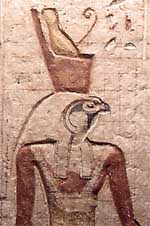 To begin with, it is important to note that there are a number of Horuses within Egyptian mythology, the fathers of whom differ from one another. For example, Horus the Child is the son of the god Osiris and the goddess Isis. But Horus the Elder, also called Haroeris, is the brother of Osiris, both of whom are the sons of the earth god Seb, Keb or Geb. Hence, it is Horus the Elder who is the "Son of Seb," as Jesus is "Son of Joseph."
To begin with, it is important to note that there are a number of Horuses within Egyptian mythology, the fathers of whom differ from one another. For example, Horus the Child is the son of the god Osiris and the goddess Isis. But Horus the Elder, also called Haroeris, is the brother of Osiris, both of whom are the sons of the earth god Seb, Keb or Geb. Hence, it is Horus the Elder who is the "Son of Seb," as Jesus is "Son of Joseph."
The mythical motif of Geb/Seb being the father of Horus is demonstrated in chapter 29A of the Egyptian Book of the Dead:
"...I am Horus, who is in hearts... I may be in the body of my father Geb and of my mother Nut...." (Faulkner, 103).
Geb/Seb is also called the "father of the gods," as are other Egyptian gods such as Kneph/Khnum and Ptah. (Wilkinson, 62; Fallows, 416)
Moreover, while Horus's father Seb is the earth god, Joseph is the earthly father of Jesus. This apparent correlation between Christianity and the Egyptian religion includes the observation that there is an obvious similarity between the names of the fathers, Joseph broken down into "Io-seph," while "Seb" can be transliterated as "Sev," essentially the same as "Seph." In addition, both Seb and Joseph may be said to be "artificers," "craftsmen" or "carpenters."
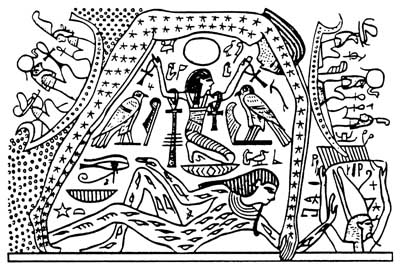
The sky goddess Nut bending over the earth god Geb/Seb, with the wind/air god Shu in between holding the crosses of eternal life
Seb or Geb?
The god Seb has also been called "Keb" and "Geb," although "Seb" was the most popularly accepted form for several decades. While some modern sources identify the "Seb" name as an "error," others maintain it as an alternative, including Turner and Coulter's Dictionary of Ancient Deities (p. 189). Indeed, on p. 4 of the Dictionary, "Seb" is included in a list of gods "in the Second Corridor of the Tomb of Seti."
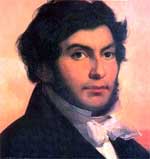 The identification of the god Seb can be found at least as early as the time of famed French linguist Jean-François Champollion (1790-1832), who, along with Dr. Thomas Young, was responsible for translating the Rosetta Stone and cracking open the Egyptian hieroglyphs. In 1824, Champollion published his Précis du système hiéroglyphique des anciens Égyptiens, in which he referred to "le dieu Seb ou Scheb" under an entry for the Coptic word CB or cyb, pronounced with an initial "s" sound. Champollion also refers toSeb on several other occasions.
The identification of the god Seb can be found at least as early as the time of famed French linguist Jean-François Champollion (1790-1832), who, along with Dr. Thomas Young, was responsible for translating the Rosetta Stone and cracking open the Egyptian hieroglyphs. In 1824, Champollion published his Précis du système hiéroglyphique des anciens Égyptiens, in which he referred to "le dieu Seb ou Scheb" under an entry for the Coptic word CB or cyb, pronounced with an initial "s" sound. Champollion also refers toSeb on several other occasions.
Another early, English reference to "Seb" can be found in Dr. Samuel Birch's Egyptian Dictionary, contained in the fifth volume of Dr. Baron Bunsen'sEgypt's Place in Universal History (1848). On p. 212, Birch - a renowned Egyptologist of his time - translates the Egyptian Book of the Dead chapter or spell 68 as:
"The Gates of heaven open. The Gates of earth open to me. Seb has opened the bolts, he has opened the chief or the lower abode wide. The Osiris comes.... He prevails over his heart, he prevails over his hand, he prevails over the meals, over the waters, he prevails over the streams, he prevails over the pools, he prevails over everything done against him in Hades, he prevails over what he has been ordered to do upon earth. The Osiris is born like a word. He lives, then it is off the bread of Seb..." (See also Faulkner, 107)
Concerning this chapter, Gerald Massey remarks, "Half the history of the Christ on earth is contained in this passage." (Massey, NG, II, 408.)
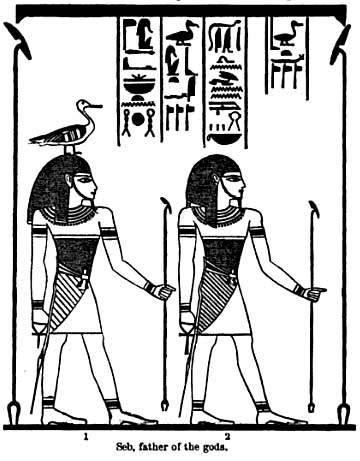 Furthermore, Egyptologist Sir Peter le Page-Renouf went into great depth in analyzing the name "Seb," saying that it was, "rather, sbu," which, according to this renowned scholar, "had from the earliest times different meanings". (Proceedings of the Society of Biblical Archaeology, VII, 152) Renouf also says: "Seb, as the name of a goose, signifies 'the whistler' or 'piper.'... sba, is a pipe, reed, or tube." He further raises up the Latin word sib-ilu-s and the Greek siphon, confirming that the Egyptian word is seb.
Furthermore, Egyptologist Sir Peter le Page-Renouf went into great depth in analyzing the name "Seb," saying that it was, "rather, sbu," which, according to this renowned scholar, "had from the earliest times different meanings". (Proceedings of the Society of Biblical Archaeology, VII, 152) Renouf also says: "Seb, as the name of a goose, signifies 'the whistler' or 'piper.'... sba, is a pipe, reed, or tube." He further raises up the Latin word sib-ilu-s and the Greek siphon, confirming that the Egyptian word is seb.
In the same scholarly journal (PSBA, VII, 93), another respected Egyptologist, Dr. Edouard Naville, likewise refers to the god as "Seb." One of the most famous Egyptologists of all time, Sir Dr. E.A. Wallis Budge, also provides in the same journal (122) a transliteration of a text that includes a reference to "Seb," with an "s."
This supposed "error" is repeated by European and American scholars across the board up through at least the time of Sir James George Frazer (1854-1941), who also acknowledged the transliteration as "keb." It is difficult to imagine all of these many scholars continuing to repeat such a basic blunder for several decades with no one noticing, especially with such etymological discourses as above. If this longstanding transliteration was indeed an error, repeated by dozens or hundreds of Egyptologists for over a century, this episode - among many others - would cast serious doubt upon the "peer-review" process as an infallible guarantee of worthwhile scholarship.
The push toward this purported "new reading" of "Geb" or "Keb" apparently originated with the emininent Egyptologist Dr. Heinrich Brugsch, around 1887. However, Renouf subsequently addressed this development, insisting that "Seb" was perfectly correct. Renouf remarks:
"The fact that the name of Seb was often written Keb in the last periods of hieroglyphic writing is no new discovery." (PSBA, IX, 83)
Renouf notes that Champollion had discussed the subject decades earlier, remarking that the "Egyptian Saturn" took the name of "Sev" or "Siv," as well as that of "Keb" or "Kev." Next Renouf comments, "The first point I must insist upon is that the old orthodox reading, Seb...is not an erroneous one," and he demonstrates that the ancient Egyptian spelling of the Roman words "sebastos" and "sebasta" used the same hieroglyphs as the god's name. (PSBA, IX, p. 83.) Renouf gives many other reasons for maintaining the "s" sound for this hieroglyphic combination, including Assyrian, Greek and Coptic inscriptions. (84) He also provides several other Egyptian inscriptions and words that clearly use the goose hieroglyph in Seb's name as an "s" sound. Says Renouf:
Renouf concludes:
"It is not probable that any of the facts quoted will be disputed, but it is very important to show that Egyptologists have not been mistaken for the last fifty years in assigning a sibilant sound to the two signs which are used interchangeably in writing the name of the god, but that they rely upon a mass of evidence from the best time of Egyptian writing down to the latest." (85)
He next says: "The value seb is then absolutely certain..." (88) He raises the issue of the letter "c" having both the "s" and "k" sounds, as a possible similar solution to the problem of "seb" and "keb," which has since become standardly translitered as "geb" or "gb." The Egyptologist then asserts that "keb" is in actuality "wrongly written." Further on, Renouf remarks, "Geb cannot possibly be the right name of an Egyptian god." (95)
In addition to the other Egyptian and non-Egyptian evidence cited above, if the ancient Egyptians specifically used the same hieroglyphs in the god's name to spell out Latin words that began with the sound "seb," the issue is settled: At some point in ancient times, the god of the earth was known as "Seb." In this latter case concerning the Latin inscriptions, it appears that "Seb" was in currency around the time Christianity was beginning to be formulated.
Budge (GE, II, 94) says of Brugsch's thrust to change "Seb" to "Geb" or "Keb" that "in very early times this undoubtedly seems to have been the correct form of the god's name." Nevertheless, Budge continues to describe the god as "seb," this term being a name of a "peculiar species" of goose. Budge also says that Seb "plays a very important part in the Book of the Dead."
 The bird symbol in the common hieroglyphic combination for "Seb" is number G39 in what is called "Gardiner's Sign List." Ancient Egypt Online lists glyph G39 as a "duck" and says it is pronounced "sA." Gardiner's G38 - a goose - is also listed as being used in the god's name and pronounced "gb." The same hieroglyph with the "duck" (G39) is shown by Budge in the Egyptian Book of the Dead, chapter 82 (172). Earlier in the same spell, Budge shows G39 as "smen," which he translates as "goose." Egyptologist Dr. Raymond O. Faulkner translates the same hieroglyph at the beginning of spell 82 as "goose" and later when it also appears in the god's name, he renders it "Geb." (Faulkner, pl. 27) The fact that G39 is used in this spell would make one think that god's name must be "Seb" and G39 a "goose," rather than a "duck."
The bird symbol in the common hieroglyphic combination for "Seb" is number G39 in what is called "Gardiner's Sign List." Ancient Egypt Online lists glyph G39 as a "duck" and says it is pronounced "sA." Gardiner's G38 - a goose - is also listed as being used in the god's name and pronounced "gb." The same hieroglyph with the "duck" (G39) is shown by Budge in the Egyptian Book of the Dead, chapter 82 (172). Earlier in the same spell, Budge shows G39 as "smen," which he translates as "goose." Egyptologist Dr. Raymond O. Faulkner translates the same hieroglyph at the beginning of spell 82 as "goose" and later when it also appears in the god's name, he renders it "Geb." (Faulkner, pl. 27) The fact that G39 is used in this spell would make one think that god's name must be "Seb" and G39 a "goose," rather than a "duck."
In the final analysis, it is evident that the alternates for Seb are not newly known and that "Seb" is not an error but a variant that dates to antiquity and was used to describe the father of Horus.
Seb is Joseph?
The Hebrew word for Joseph is translitered as Yowceph, a fact that demonstrates the interchangeability of the letters "s" and "c." "Yowceph" or "Joseph" is defined by Strong's (H3130) as "Jehovah has added." It is said to be the "future" of the primitive root "yacaph," which means "to add." However, if "Joseph" means "Jehovah has added," the "Jo" or "Io," would refer to Jehovah, Yahweh or Yah, while "seph," "ceph," "caph" or "saf" would be a separate term. Another example of this development would be the Hebrew word "Yehoshua," also transliterated as "Joshua" and rendered in Greek "Jesus," serving as a combination of the Hebrew words for God, "Yahweh," and for "salvation."
In Christ in Egypt, I wondered if, as the Egyptian god Set's name is also translitered as "Seth," "Seb" could be rendered at some point as "Sebh" or "Seph." As we have seen, "Seb" has also been transliterated as "Sev" and "Siv," essentially as in "Io-Sef" or "Jo-seph." Also, "Joseph" is sometimes spelled "Josip," "Iosip" or "Yosep," which again reveals a possible connection to "Seb."
Adding to this analysis of the "Seb," "Sev" or "Seph" figure in Egyptian mythology is the moniker "Osar-seph" or "Osarsiph" as a "priest of Osiris-Seph" and, per the Jewish historian Josephus (Against Apion, I, 31; Whiston, 620), another name for Moses. According to Assyriologist Rev. Dr. A.H. Sayce, Osar-Seph is the same as Joseph, rather than Moses (The Academy, XXIV, 163). In consideration of the fact that the Talmud calls Joseph/Iosef "Serapis" (Tract Abuda Zara; Rodkinson, 86), the Egyptian god who is a combination of Osiris and the Apis bull, this conclusion appears sound.
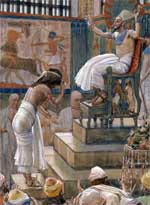 In view of all the cultural exchange between Egypt and Canaan/Israel, including many Egyptian religious concepts and mythical motifs finding their way into the Old Testament and Judaism - as well as the sojourn of the patriarch Joseph in Egypt, according to the Bible (Gen 39:1ff) - it is logical to suggest there is a relationship between these words Seb/Sev and Joseph/Iosef. In any event, along with the apparent similarity of names, the two father-figures possess other suggestive characteristics in common, such as their occupation or role.
In view of all the cultural exchange between Egypt and Canaan/Israel, including many Egyptian religious concepts and mythical motifs finding their way into the Old Testament and Judaism - as well as the sojourn of the patriarch Joseph in Egypt, according to the Bible (Gen 39:1ff) - it is logical to suggest there is a relationship between these words Seb/Sev and Joseph/Iosef. In any event, along with the apparent similarity of names, the two father-figures possess other suggestive characteristics in common, such as their occupation or role.Seb as "Carpenter?"
Christian tradition holds that both Jesus and his father were "carpenters" (Mt 13:55, Mk 6:3). It is important to note that the Greek word in the New Testament for "carpenter," τέκτων or tekton, means not only "carpenter" but also "builder" and "any craftsman, or workman," including in "the art of poetry" or as a "maker of songs." It also means "planner, contriver, plotter" as well as "an author" (Strong's G5045). Interestingly, in modern Greek tekton means "freemason" (Collin's Contemporary Greek Dictionary, 168, 311; Oxford Dictionary of Modern Greek, 189).
The word tekton in the Old Testament, as at Isaiah 44:12, is translated as "smith," "blacksmith" or "ironsmith," whereas "carpenter" is a tekton xulon, a "wood craftsman" or "wood-carver," as at Is 44:13. At Isaiah 40:19, tekton is also used to describe a worker of precious metals, while at Is 40:20 the word is rendered "workman" or "craftsman." The Hebrew word translated as tekton is חרש or charash, which means "craftsman, artisan, engraver, graver, artificer" (Strong's H2796), as well as "smith," "carpenter" and "mason." (Gesenius's Lexicon)
Thus, Jesus and Joseph are not necessarily "carpenters" but could be any of these other artificers as well. Indeed, in non-canonical Christian tradition Jesus was represented as adyer of fabrics as well as a potter or clayworker and a painter. (First Infancy Gospel, XV, 6, 13; see Is 64:8) As the Lord, Christ is held to be the "Great Architect of the Universe" (Parsons, 3), the word "architect" (αρχιτέκτων) obviously related to tekton, while the Old Testament God himself is also a "potter." (Is 64:8)
The Egyptian creator god Ptah is likewise the "Great Architect of the Universe," called the "Master Craftsman" as well. (Smith, 36) As Egyptologist Dr. Siegfried Morenz states, in a section entitled, "The Creator-god as craftsman" (p. 161):
"Ptah...was depicted as an artisan or more precisely as a smith and metal-worker...."
Morenz also discusses the god Kneph/Khnum as the Potter, who fashions living creatures, and calls him "a craftsman." He furthers addresses Geb as a "procreator" god (162).
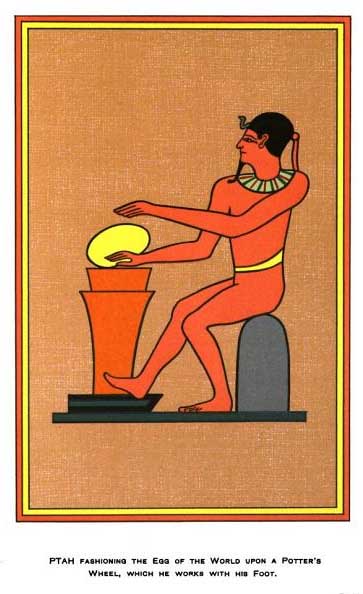 Ptah is also the "Great Artificer," who "shapes the sun- and moon-eggs on his potter's wheel." (Budge, GE, I, 501; Hastings, 145) Ptah thus could have been styled tekton, if described in Greek.
Ptah is also the "Great Artificer," who "shapes the sun- and moon-eggs on his potter's wheel." (Budge, GE, I, 501; Hastings, 145) Ptah thus could have been styled tekton, if described in Greek.
This master craftsman Ptah was thought to have been an egg issuing from Seb or Geb is the "Cackler," as the hieroglyph for the god's name is a goose. (Mackenzie, 81) As his "son" Ptah fashioned the sun-egg, it was perceived that Seb the Cackler also laid the "golden egg" of the sun each day. (PSBA, VII, 153) Hence, Ptah and Seb - both called "father of the gods" - are considered creators of the sun, traditional role of the "divine artificer," "builder" or "carpenter." (Hart, 129)
Indeed, the correlations between Seb/Geb and Ptah are enough to cause Egyptologist Dr. Henri Frankfort to remark:
"[In Egypt] the earth was a male god - Ptah or Geb.... The figure of Geb would seem to possess the same potentialities as that of Ptah.... [Geb] is sometimes called 'the father of the gods,' and it is possible that at some time and place he was worshipped as the Creator...." (Frankfort, 181)
All factors considered, it is logical to suggest a correlation between Seb and Joseph as concerns their role or occupation as artificer or tekton as well.
(For more on the "carpenter" motif as found in pre-Christian mythology, see my book Suns of God).
As demonstrated here and in my other works, the correlations between the Egyptian god Horus and Jewish godman Jesus are profound and important. These parallels include these figures' "fathers," Seb and Joseph, whose names are similar and whose earthly roles and tektonic occupations likewise reveal significant correspondences that indicate the Egyptian myths may have been a principal source for various aspects of the gospel story of Christ.
Bibliography
"Gardiner's Sign List," Ancient Egypt Online, www.ancientegyptonline.co.uk/G-birds2.html
"Gardiner's Sign List," en.wikipedia.org/wiki/List_of_hieroglyphs/G
The Academy, XXIV. London: Publishing Office, 1883.
The Apocryphal New Testament. London: William Hone, 1820.
Blue Letter Bible, blueletterbible.org
Budge, E.A. Wallis. The Egyptian Book of the Dead. New York: Dover, 1967.
--The Gods of the Egyptians, I. London: Methuen & Co., 1904.
--The Gods of the Egyptians, II. London: Methuen & Co., 1904.
Bunsen, Baron. Egypt's Place in Universal History, V. tr. Charles H. Cottrell. London: Longmans, Green and Co., 1867.
Collins Contemporary Greek Dictionary. Glasgow: Wm. Collins Sons & Co., 1978.
Fallows, Samuel. The Progressive Dictionary of the English Language. Chicago: The Progressive Publishing Company, 1885.
Faulkner, Raymond O., tr. The Egyptian Book of the Dead. San Francisco: Chronicle Books. 1998.
Frankfort, Henri. Kingship and the Gods. London: University of Chicago Press, 1978.
Hart, George. The Routledge Dictionary of Egyptian Gods and Goddesses. Abingdon: Routledge, 2005.
Hastings, James, and John A. Selbie, ed. Encyclopedia of Religion and Ethics, VII. Edinburgh: T&T Clark, 1912.
Mackenzie, Donald Alexander. Egyptian Myth and Legend. Gresham, 1910.
Massey, Gerald. The Natural Genesis, II. London: Williams and Norgate, 1883.
Morenz, Siegfried. Egyptian Religion. tr. Ann E. Keep. Ithaca: Cornell University Press, 1992.
Naville, Edouard, and W. Harry Rylands, eds. The Life-Work of Sir Peter Le Page Renouf, II. Paris: Ernest Leroux, 1903.
The Oxford Classical Dictionary of Modern Greek. Oxford: Clarendon Press, 1975.
Parsons, John Usher. The Biblical Analysis or a Topical Arrangement of the Instructions of the Holy Scriptures. Boston: William Peirce, 1837.
Proceedings of the Society of Biblical Archaeology, VII. Bloomsbury: Offices of the SBA, 1885.
Proceedings of the Society of Biblical Archaeology, IX. Bloomsbury: Offices of the SBA, 1887.
Rodkinson, Michael L., tr. The New Edition of the Babylonian Talmud, IX. New York: New Talmud Publishing Company, 1903.
Smith, Mark. On the Primaeval Ocean. Denmark: Museum Tusculanum Press and The Carlsberg Papyri, 2002.
Turner, Patricia, and Charles Russell Coulter. Dictionary of Ancient Deities. New York: Oxford University Press, 2001.
Whiston, William, tr. The Complete Works of Josephus. Grand Rapids: Kregel Publications, 1981.
Wilkinson, J. Gardner. The Manner and Customs of the Ancient Egyptians, III. London: John Murray, 1878.
"Gardiner's Sign List," en.wikipedia.org/wiki/List_of_hieroglyphs/G
The Academy, XXIV. London: Publishing Office, 1883.
The Apocryphal New Testament. London: William Hone, 1820.
Blue Letter Bible, blueletterbible.org
Budge, E.A. Wallis. The Egyptian Book of the Dead. New York: Dover, 1967.
--The Gods of the Egyptians, I. London: Methuen & Co., 1904.
--The Gods of the Egyptians, II. London: Methuen & Co., 1904.
Bunsen, Baron. Egypt's Place in Universal History, V. tr. Charles H. Cottrell. London: Longmans, Green and Co., 1867.
Collins Contemporary Greek Dictionary. Glasgow: Wm. Collins Sons & Co., 1978.
Fallows, Samuel. The Progressive Dictionary of the English Language. Chicago: The Progressive Publishing Company, 1885.
Faulkner, Raymond O., tr. The Egyptian Book of the Dead. San Francisco: Chronicle Books. 1998.
Frankfort, Henri. Kingship and the Gods. London: University of Chicago Press, 1978.
Hart, George. The Routledge Dictionary of Egyptian Gods and Goddesses. Abingdon: Routledge, 2005.
Hastings, James, and John A. Selbie, ed. Encyclopedia of Religion and Ethics, VII. Edinburgh: T&T Clark, 1912.
Mackenzie, Donald Alexander. Egyptian Myth and Legend. Gresham, 1910.
Massey, Gerald. The Natural Genesis, II. London: Williams and Norgate, 1883.
Morenz, Siegfried. Egyptian Religion. tr. Ann E. Keep. Ithaca: Cornell University Press, 1992.
Naville, Edouard, and W. Harry Rylands, eds. The Life-Work of Sir Peter Le Page Renouf, II. Paris: Ernest Leroux, 1903.
The Oxford Classical Dictionary of Modern Greek. Oxford: Clarendon Press, 1975.
Parsons, John Usher. The Biblical Analysis or a Topical Arrangement of the Instructions of the Holy Scriptures. Boston: William Peirce, 1837.
Proceedings of the Society of Biblical Archaeology, VII. Bloomsbury: Offices of the SBA, 1885.
Proceedings of the Society of Biblical Archaeology, IX. Bloomsbury: Offices of the SBA, 1887.
Rodkinson, Michael L., tr. The New Edition of the Babylonian Talmud, IX. New York: New Talmud Publishing Company, 1903.
Smith, Mark. On the Primaeval Ocean. Denmark: Museum Tusculanum Press and The Carlsberg Papyri, 2002.
Turner, Patricia, and Charles Russell Coulter. Dictionary of Ancient Deities. New York: Oxford University Press, 2001.
Whiston, William, tr. The Complete Works of Josephus. Grand Rapids: Kregel Publications, 1981.
Wilkinson, J. Gardner. The Manner and Customs of the Ancient Egyptians, III. London: John Murray, 1878.

Δεν υπάρχουν σχόλια:
Δημοσίευση σχολίου